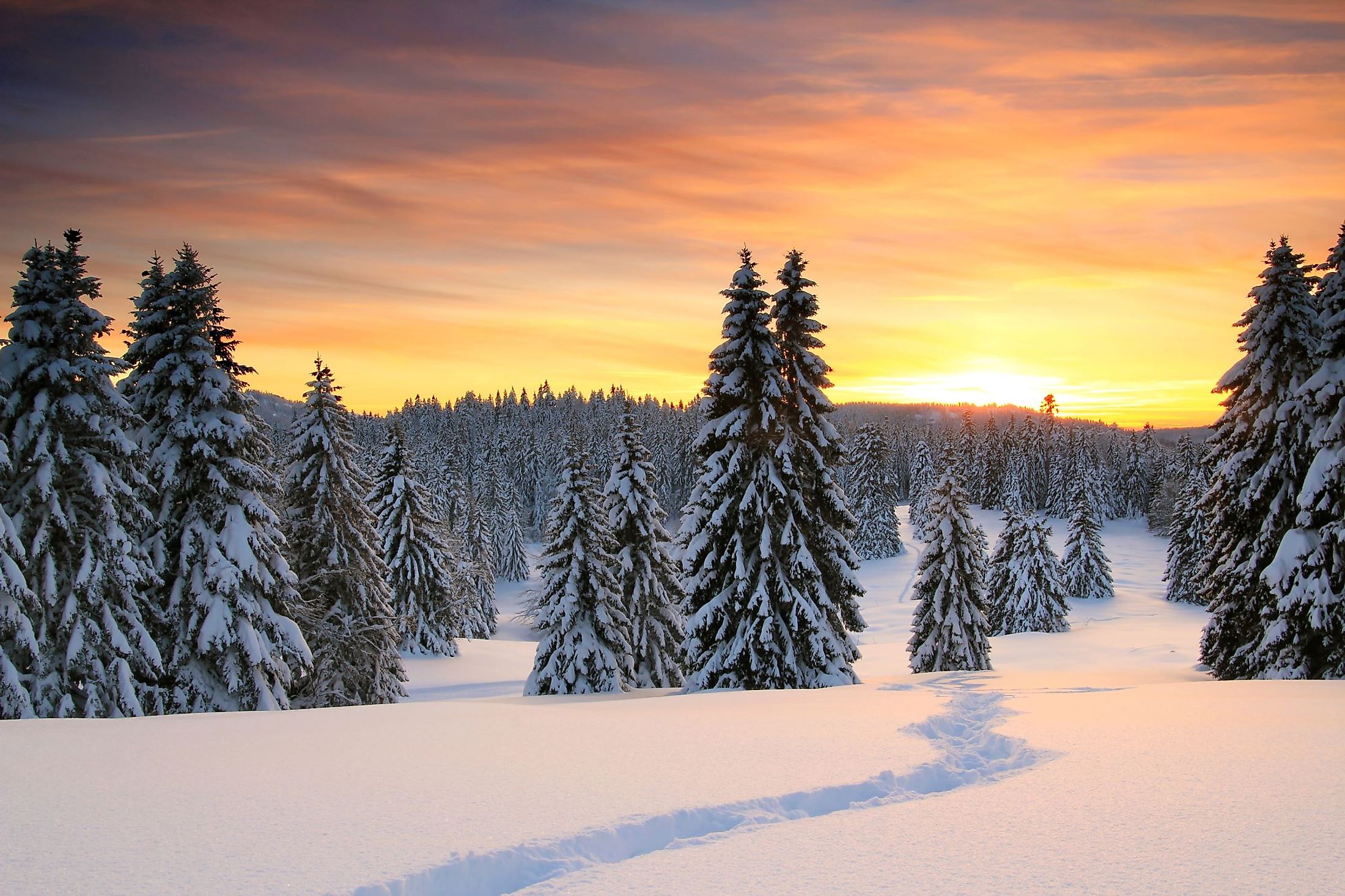
Jura Mountains
The Jura Mountains is a mountain chain on the north of the Alps located along the Swiss-French border. The sub-alpine mountain range mostly lies in Switzerland, with a significant portion of the western part located in France. It extends for approximately 360 kilometers between the Rhine and Rhone Rivers. The Jura’s highest peaks are located in Geneva. Cret de la Neige is the range's highest peak at 1,718 meters above sea level. Other significantly tall peaks include Le Reculet, La Dole, and Mount Tendre, with the three peaks rising above 1,680 meters. The range’s western slopes drain through the Rhone, while the northern slope drains via Doubs River.
Location
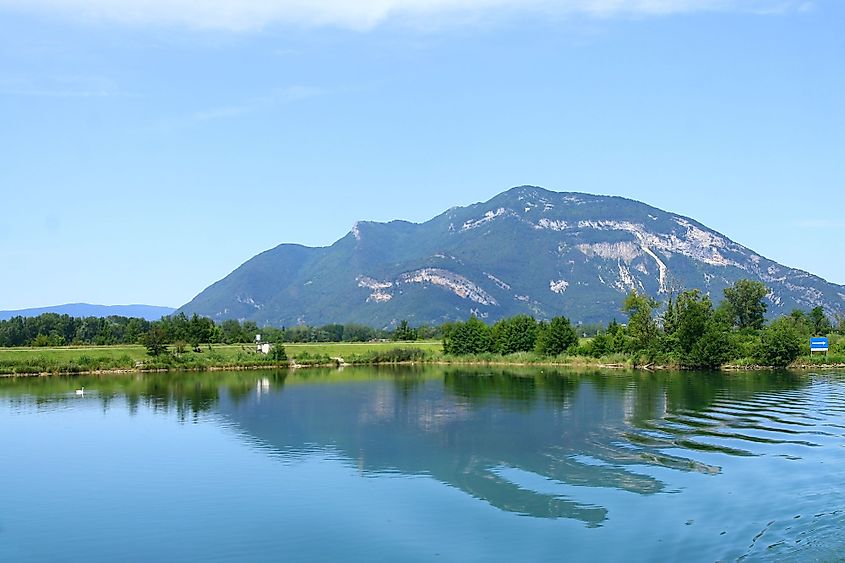
The Jura Mountains is one of the major mountain ranges in Western Europe, located on the Swiss-French border. The mountain range sits on the northern side of the Alps and is a distant portion of the Central European Uplands. In France, it occupies part of the Franche-Comte region in the eastern part of the country and stretches southwards into Auvergne-Rhone-Alpes. Le Cret de la Neige, the range’s highest peak, is located in the Ain department. The range’s northern end extends into the Alsace region on the western bank of the Rhine River. About 1,600 square kilometers of the mountain region in France is protected as Jura Mountains Regional Natural Park.
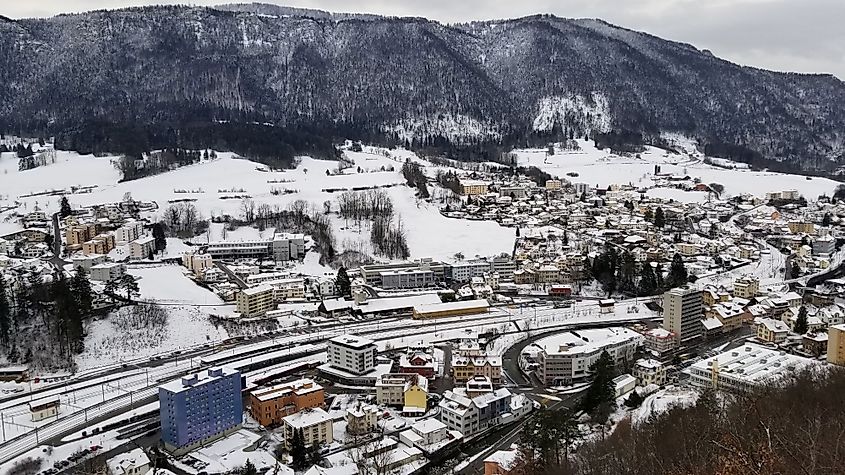
In Switzerland, the Jura Range is one of the country’s three geographical regions, with the other two being the Swiss Alps and the Swiss plateau. The range covers the western section, including Solothurn, Basel-Landschaft, Bernese Jura, Jura, Vaud, and Neuchatel cantons. The cities in the mountain region include Le Locle, La Chaux-de-Fonds, and Sainte-Croix. The Swiss Jura region was included in the Swiss Confederacy in the 19th century. The Jura separatism in the 20th century led to the creation of Jura Canton in 1979.
Geography and Geology
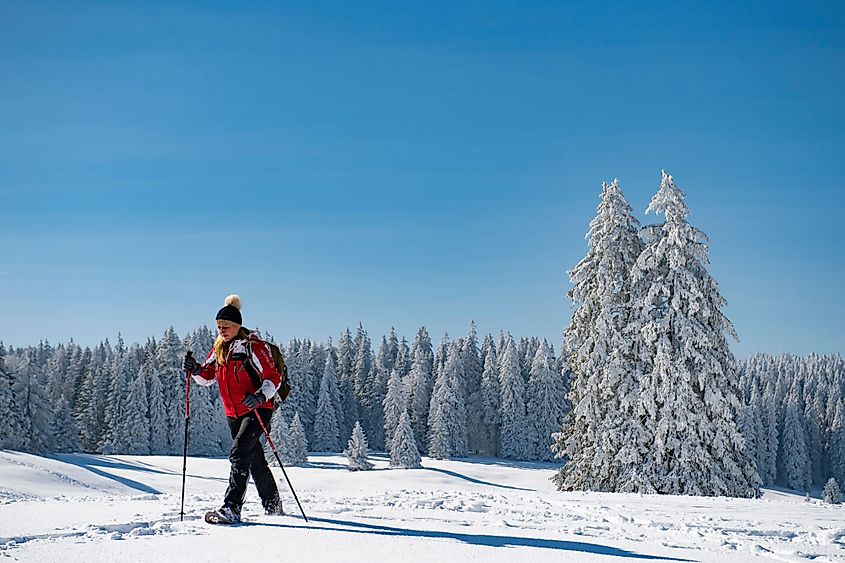
The Jura Range was named so because of the thick forest covering the mountains and the surrounding valleys, with the name “Jura” translating to “forest.” Beech forests and oak groves are found at lower and higher elevations, while firs grow only on higher elevations. The range began forming during the Cenozoic Era and was part of the process that formed the Alps. It is formed by two separate deformational thrust phases, with the first thrust phase forming the mountain ridges in France and the second creating the higher inner mountains. The main deformation thrust on the southeast occurred approximately 5.3-2.6 years ago during the Pliocene Epoch. The Jura Mountains contain limestone and marl, resulting in a high permeability rate and lack of surface water. Several streams and rivers originate from the Jura Mountains, including Doubs, Orbe, Areuse, Birs, Schuss, Ain, and Lizon. The mountain region receives plenty of rainfall, with precipitation increasing to the west and south. Mount Tendre and Mount Risouz receive annual precipitation of about 2,030 mm, while the north-facing slope and Delsberg Valley receive less than 1,000 mm.
Economic Significance
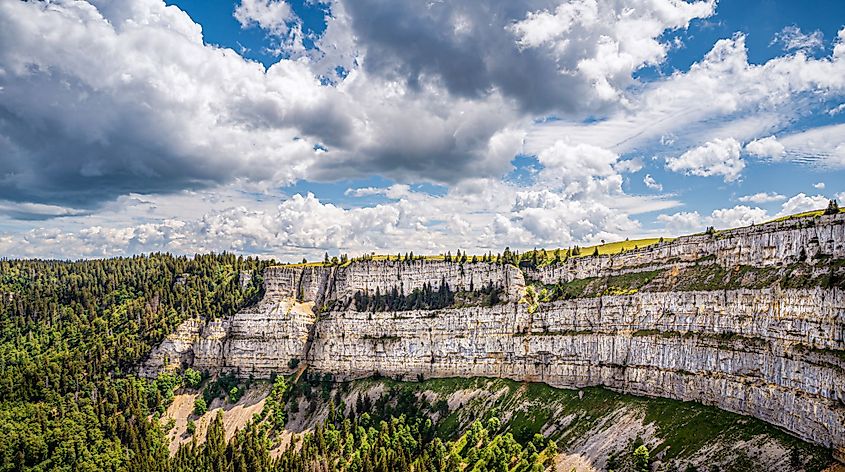
Jura’s natural beauty has made the region a major tourist destination in Western Europe, with visitors flocking the area in both summer and winter. The region is famous for hiking, cross-country skiing, downhill skiing, and cycling. The 310-km Jura ridgeway is one the most-used hiking trails in the area. The Jura Mountains also have several natural attractions, including Creux du Van, a rocky cirque measuring 150 meters deep and 1.4 kilometers wide. Other main attractions include the Chasseral Mountain, Grottes de I’Orbe cave, Taubenloch gorge, valleys, and winding roads. The twin towns of Le Locle and La Chaux-de-Fonds have been designated a World Heritage Site because of their cultural significance. Besides tourism, several light industries also thrive in the Jura region, including gem cutting, the manufacturing of music boxes, camera equipment, typewriters, and tobacco processing. Wines like Chateau-Chalon and Cotes du Jura are produced in the Jura.











